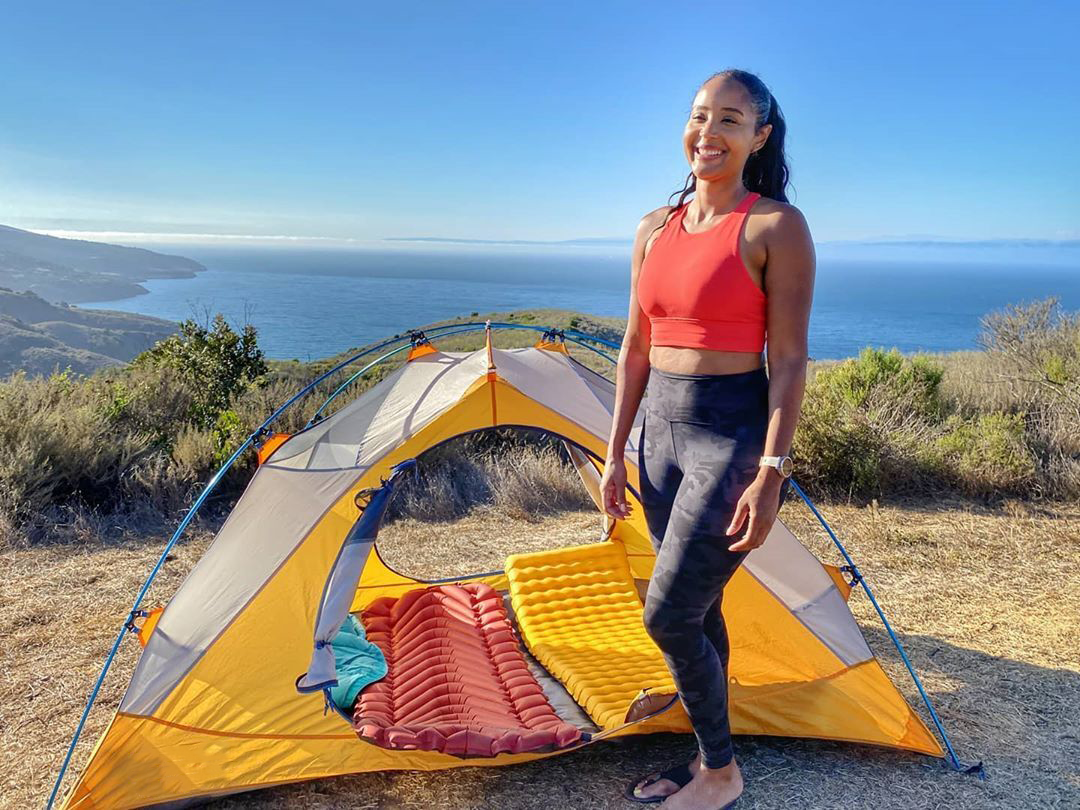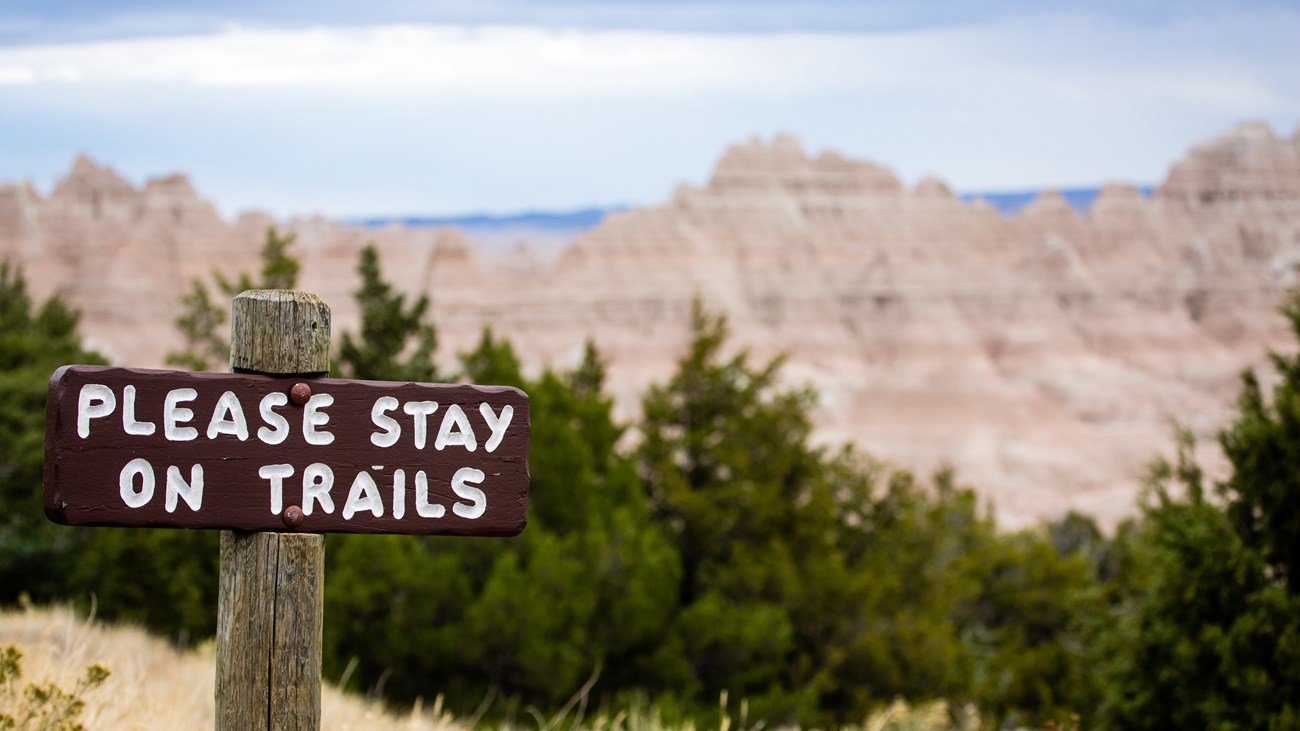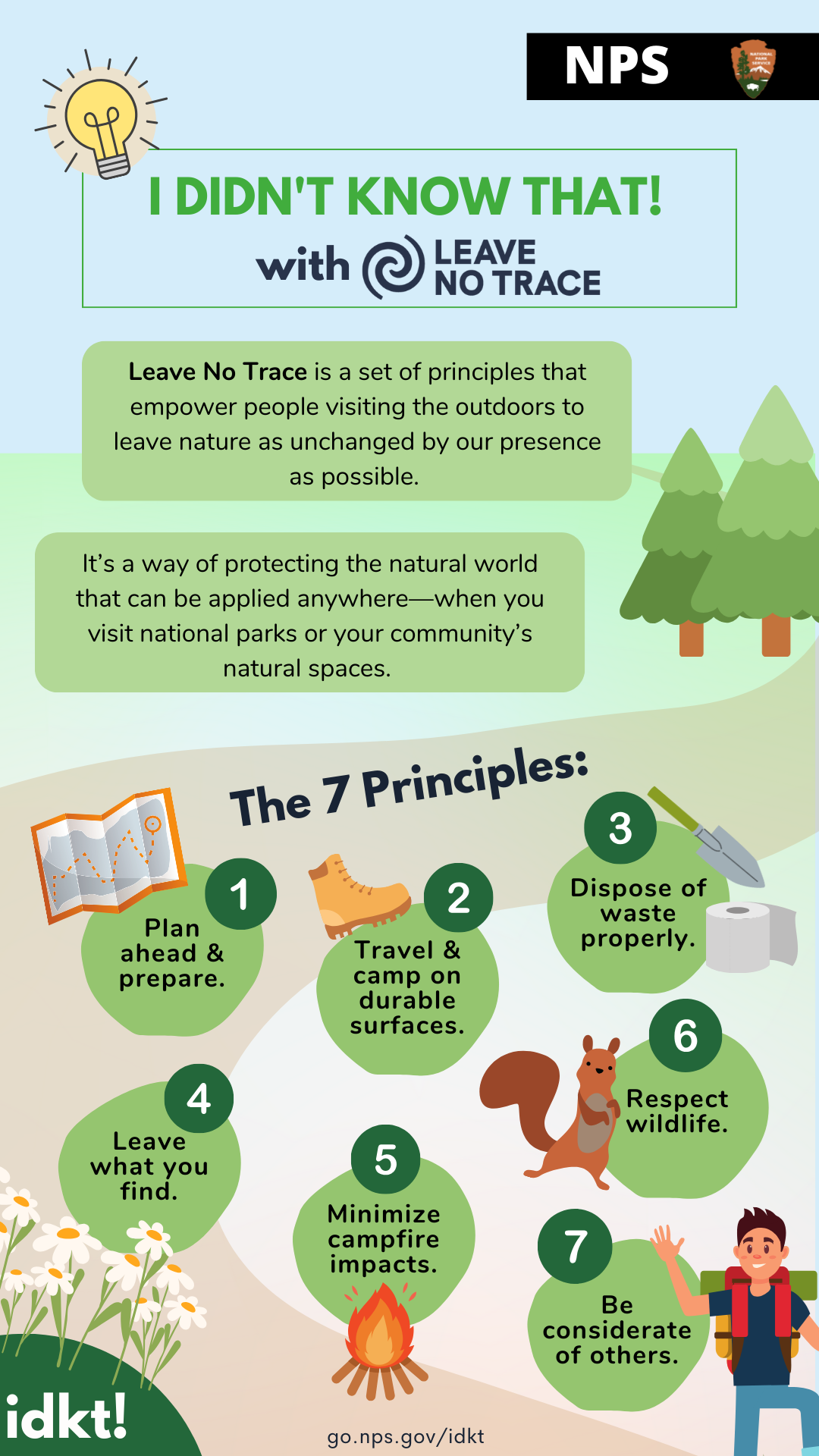Part of a series of articles titled I Didn't Know That! Leave No Trace.
Article
I Didn't Know That!: Leave No Trace

You’ve probably heard the phrase Leave No Trace before. It’s a colloquial term in the outdoor community. You see it everywhere, from campground signage to park brochures, and wilderness permits to ranger programs. It’s intermingled with phrases like “pack it in, pack it out” and “take only photos.” Leave No Trace has become so common in the outdoor community, that many forget that not everyone knows what it means. If you’ve found yourself staring blankly at a ranger saying, “Remember to Leave No Trace” as they send you on your way—this article is for you.
While the phrase almost speaks for itself, there is a lot more to learn about what it really means to practice Leave No Trace. Leave No Trace is a set of guidelines that help us protect the places we live and visit, it is a set of actions we can all take to become better stewards of the land, and it is a movement we can all join to take care of our natural spaces.
There are 7 Principles of Leave No Trace. These principles help us understand the potential ways we can impact an ecosystem and the best way, according to scientific research, to minimize that impact. These principles are managed by the Leave No Trace organization, which does consistent research to update the curriculum and provides educational programs across the United States.

Photo by Kwame Satterfield
The 7 Principles of Leave No Trace
-
Plan Ahead and Prepare
-
Travel and Camp on Durable Surfaces
-
Dispose of Waste Properly
-
Leave What You Find
-
Minimize Campfire Impacts
-
Respect Wildlife
-
Be Considerate of Others
The 7 Principles of Leave No Trace help us minimize our impact on the landscape, wildlife, and other people we may encounter. They are just as important in a neighborhood park or trail as they are in our favorite national parks.

NPS / M. Reed
What is an Impact?
Impacts occur when our outdoor recreation damages or alters the area we are visiting. Some common types of impacts are damage to wildlife, soils, vegetation, water, cultural resources, or other people. While it may be difficult to notice the impact from our singular actions, remember that thousands of people may visit these sites every day. These cumulative impacts, or the adding up of impacts over time, are where we see a noticeable difference in the health of the ecosystem.
Everyone’s personal connection to the outdoors is unique, and different ecosystems or activities may call for us to practice these Principles in different ways. Because of these, the 7 Principles should not be considered rules, but instead a framework to help us minimize our impacts in any situation.
What Can You Do
Practicing Leave No Trace is just that: a practice. It is not about being perfect, it is about doing the best we can as often as we can. Apply the 7 Principles to your outdoor pursuits, whether in your neighborhood, backyard, or longer trips. If you stay on the designated trail, you’re practicing Leave No Trace. If you pack out your trash, even your orange peels, you’re practicing Leave No Trace. Teach your friends and family and include conversations about how to Leave No Trace in your trip planning. Remember, we all share our natural resources, and we can all do our part to be stewards of these important places.

Pass It On!
Did you learn something new? It’s like you’re now part of a club dedicated to protecting the natural places that we love to explore. But with membership comes responsibility. Next time you see someone stare blankly after hearing the words “Leave No Trace,” pass it on! Protecting our ecosystems is a job for us all, but there’s no way for everyone to be an expert in everything. That’s why sharing knowledge is so important!
Download or screenshot this card to share with a friend or help spread the word and encourage others to Leave No Trace when they visit the outdoors. Thank you for helping protect our natural spaces for generations to come.
Check out other I Didn’t Know That! topics.Leave No Trace is a set of principles that empower people visiting the outdoors to leave nature as unchanged by our presence as possible.
It's a way of protecting the natural world that can be applied anywhere—when you visit national parks or your community's natural spaces.
The 7 Principles:
- Plan ahead & prepare.
- Travel & camp on durable surfaces.
- Dispose of waste properly.
- Leave what you find.
- Minimize campfire impacts.
- Respect wildlife.
- Be considerate of others.
lnt.org
Last updated: December 23, 2024
